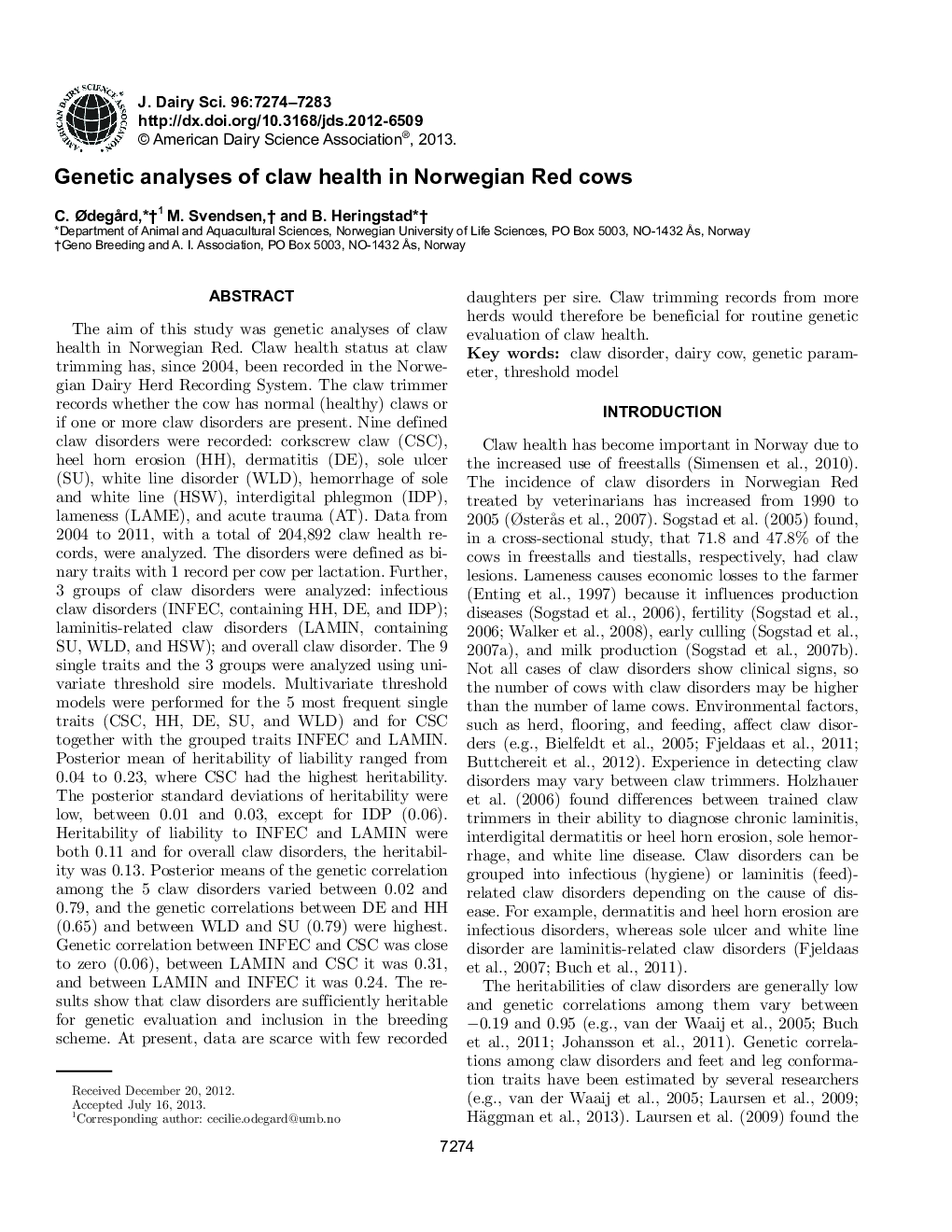| Article ID | Journal | Published Year | Pages | File Type |
|---|---|---|---|---|
| 10975067 | Journal of Dairy Science | 2013 | 10 Pages |
Abstract
The aim of this study was genetic analyses of claw health in Norwegian Red. Claw health status at claw trimming has, since 2004, been recorded in the Norwegian Dairy Herd Recording System. The claw trimmer records whether the cow has normal (healthy) claws or if one or more claw disorders are present. Nine defined claw disorders were recorded: corkscrew claw (CSC), heel horn erosion (HH), dermatitis (DE), sole ulcer (SU), white line disorder (WLD), hemorrhage of sole and white line (HSW), interdigital phlegmon (IDP), lameness (LAME), and acute trauma (AT). Data from 2004 to 2011, with a total of 204,892 claw health records, were analyzed. The disorders were defined as binary traits with 1 record per cow per lactation. Further, 3 groups of claw disorders were analyzed: infectious claw disorders (INFEC, containing HH, DE, and IDP); laminitis-related claw disorders (LAMIN, containing SU, WLD, and HSW); and overall claw disorder. The 9 single traits and the 3 groups were analyzed using univariate threshold sire models. Multivariate threshold models were performed for the 5 most frequent single traits (CSC, HH, DE, SU, and WLD) and for CSC together with the grouped traits INFEC and LAMIN. Posterior mean of heritability of liability ranged from 0.04 to 0.23, where CSC had the highest heritability. The posterior standard deviations of heritability were low, between 0.01 and 0.03, except for IDP (0.06). Heritability of liability to INFEC and LAMIN were both 0.11 and for overall claw disorders, the heritability was 0.13. Posterior means of the genetic correlation among the 5 claw disorders varied between 0.02 and 0.79, and the genetic correlations between DE and HH (0.65) and between WLD and SU (0.79) were highest. Genetic correlation between INFEC and CSC was close to zero (0.06), between LAMIN and CSC it was 0.31, and between LAMIN and INFEC it was 0.24. The results show that claw disorders are sufficiently heritable for genetic evaluation and inclusion in the breeding scheme. At present, data are scarce with few recorded daughters per sire. Claw trimming records from more herds would therefore be beneficial for routine genetic evaluation of claw health.
Related Topics
Life Sciences
Agricultural and Biological Sciences
Animal Science and Zoology
Authors
C. ÃdegÃ¥rd, M. Svendsen, B. Heringstad,
